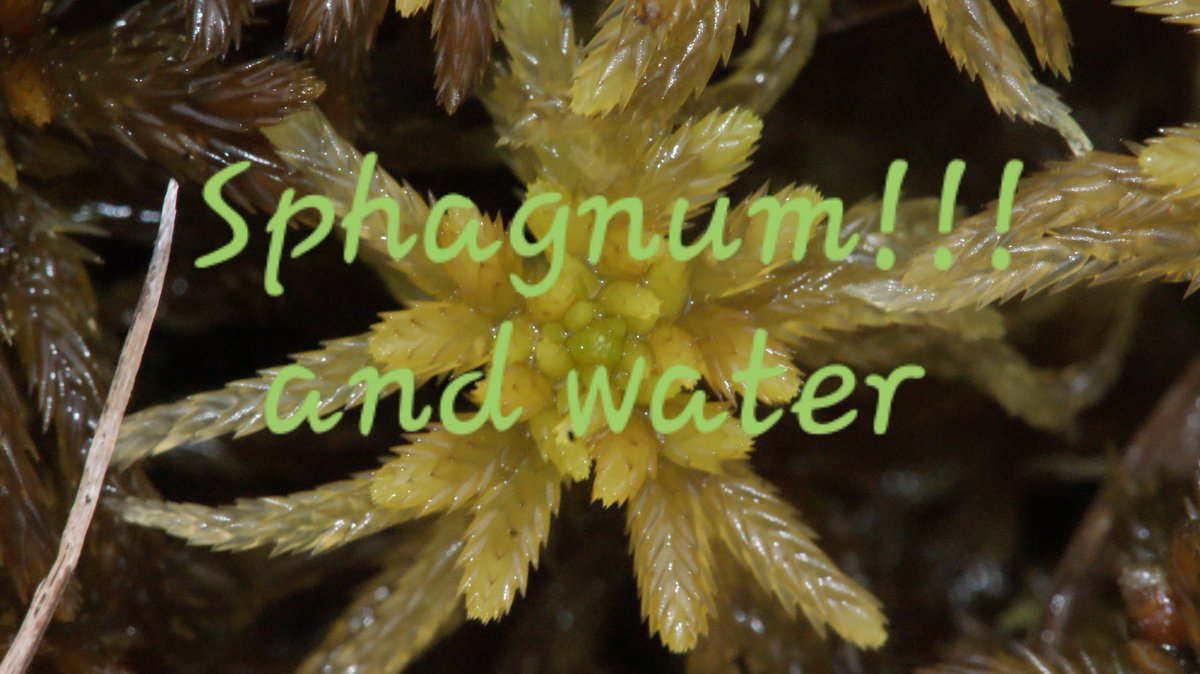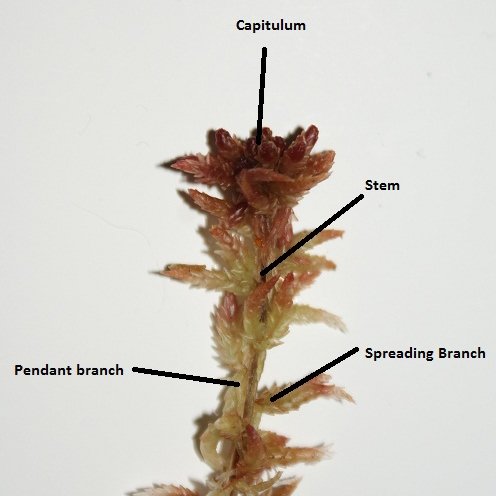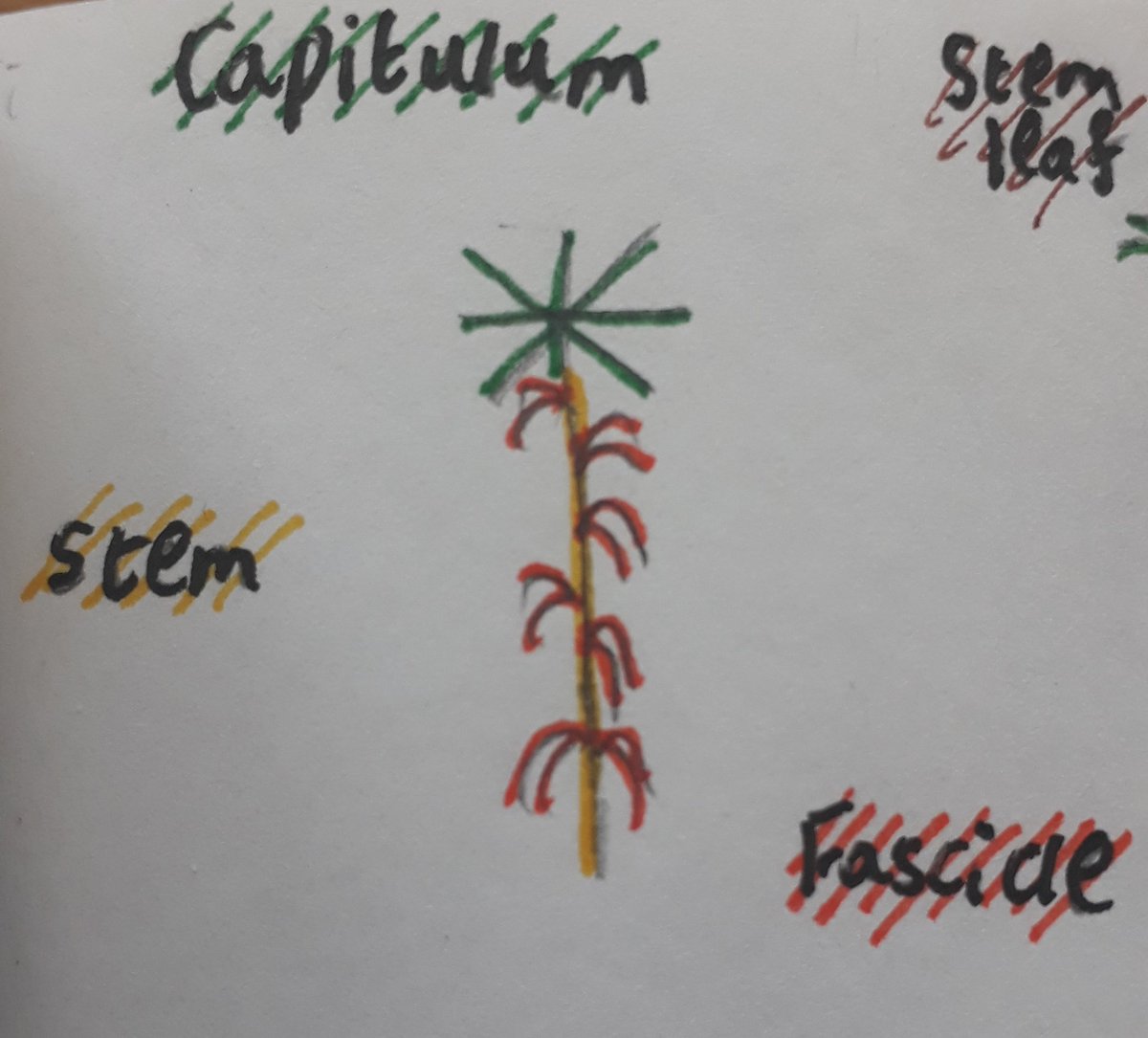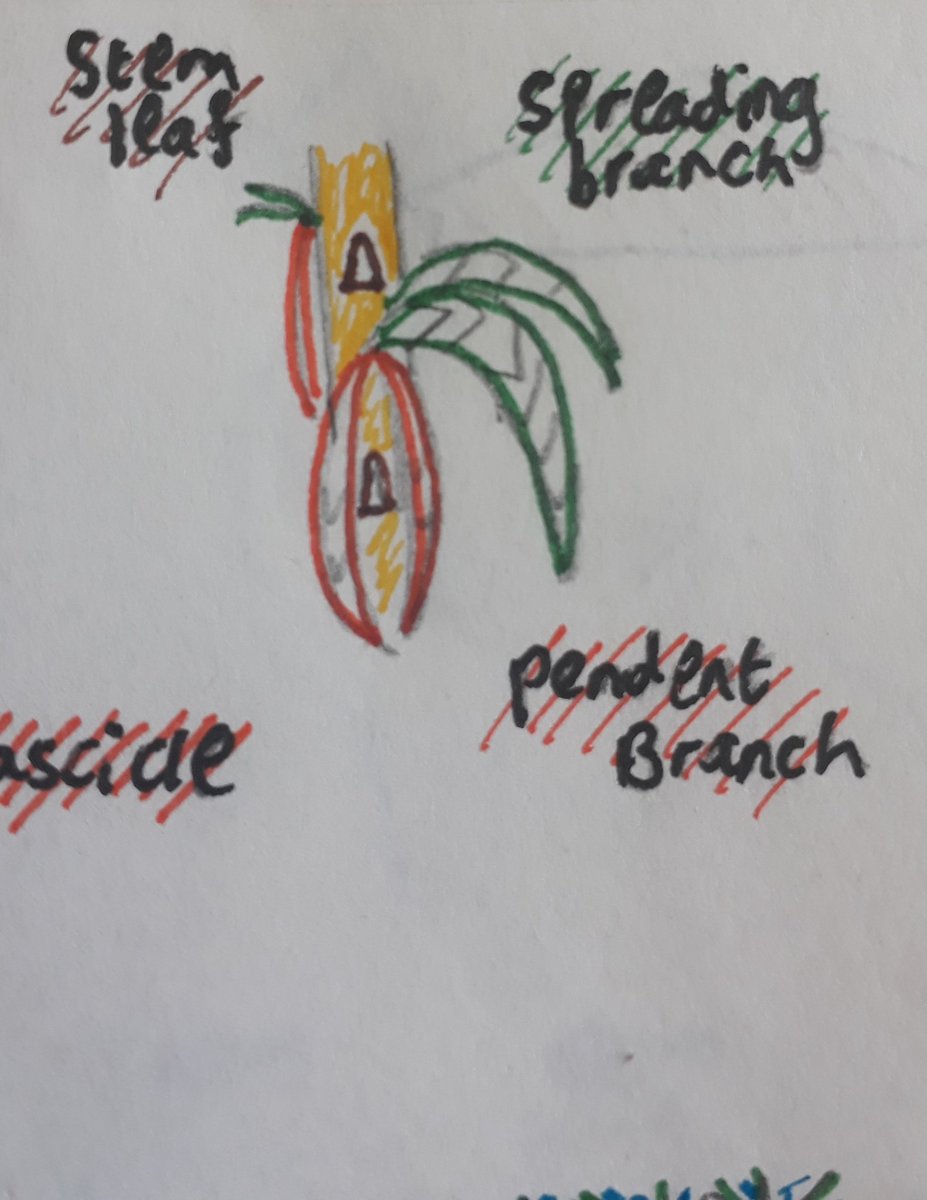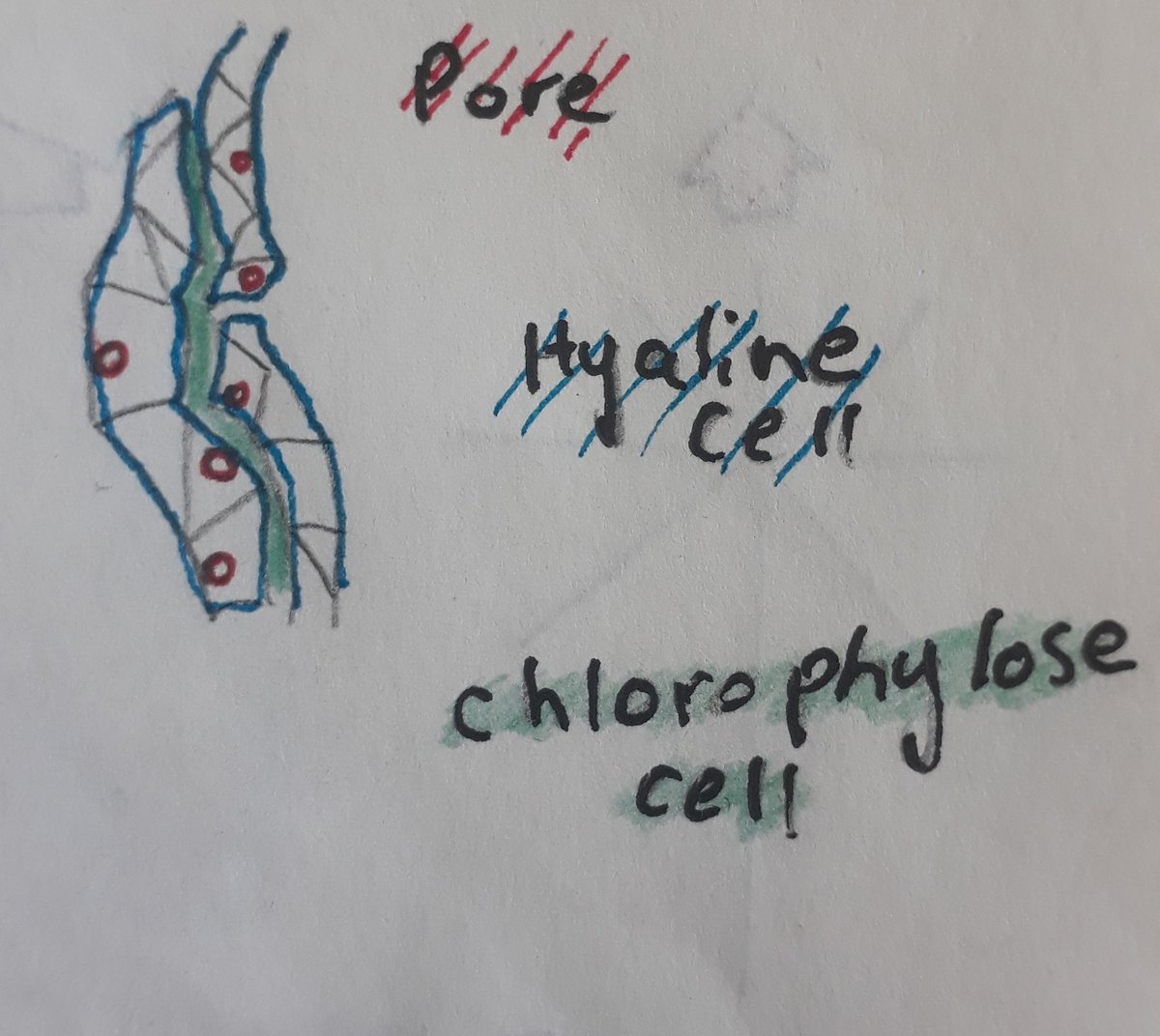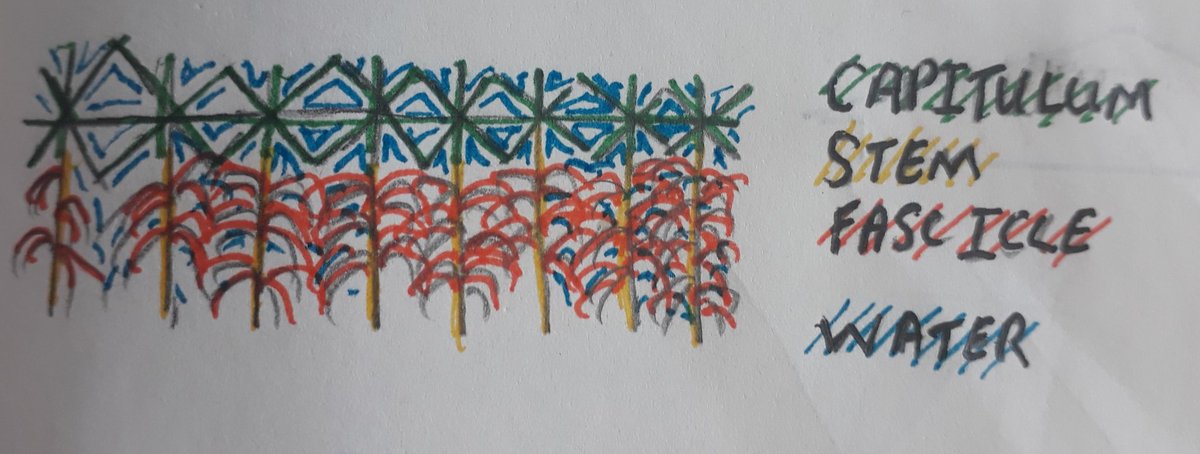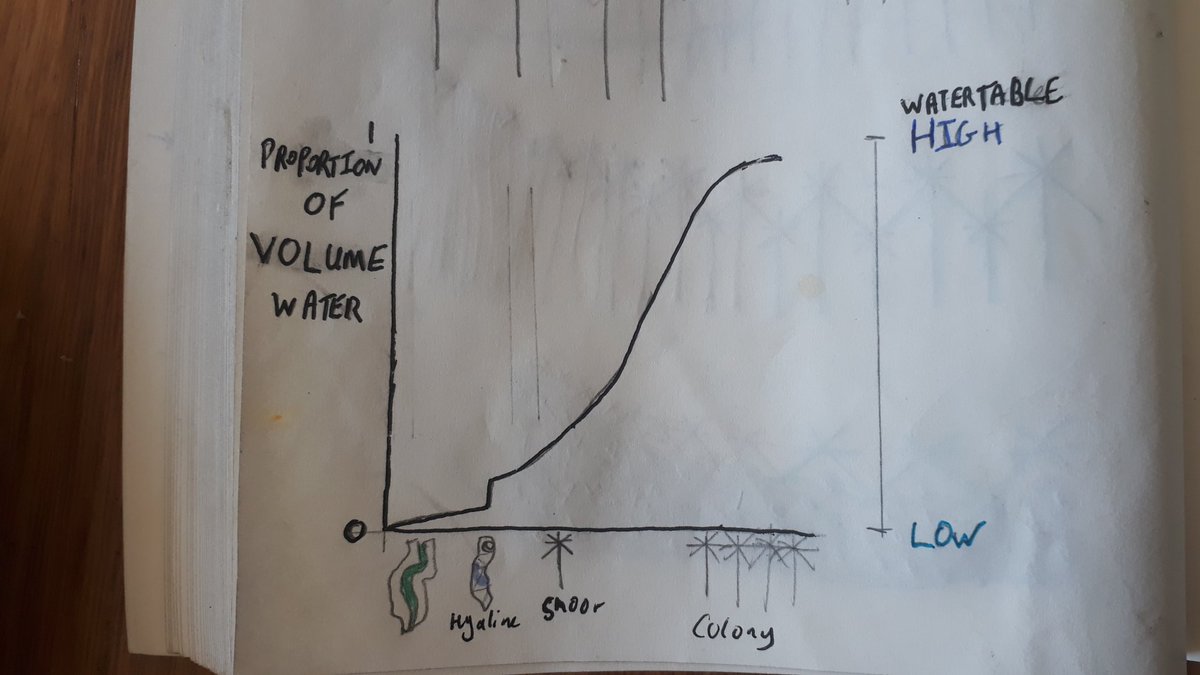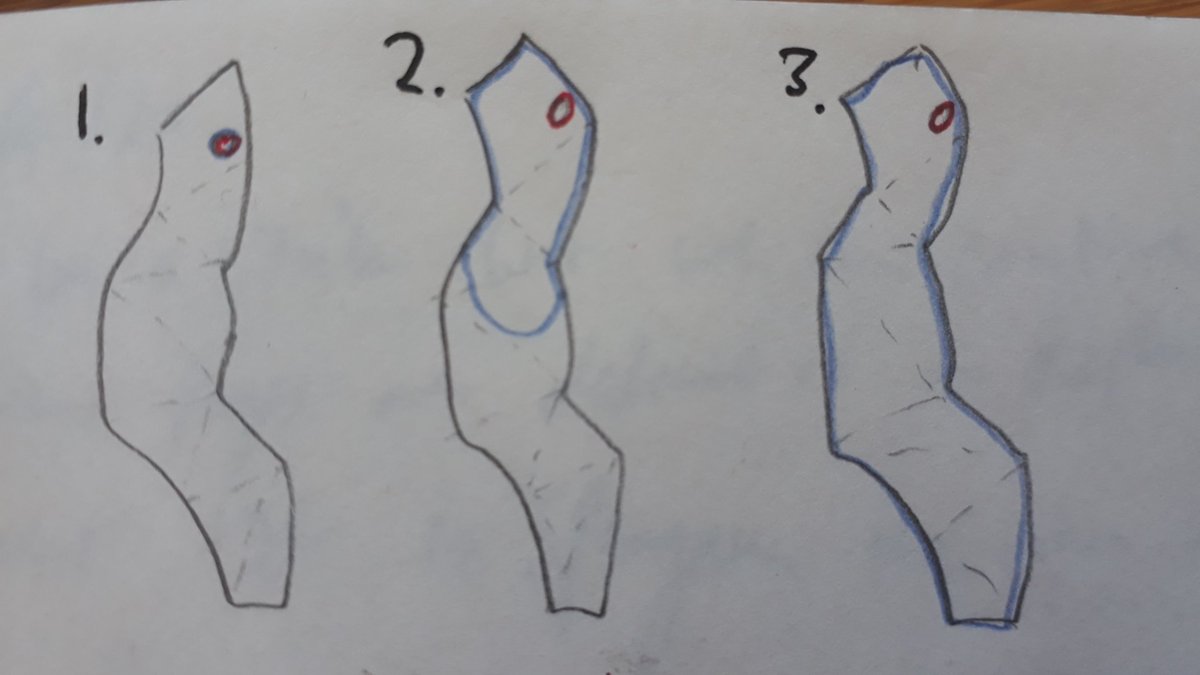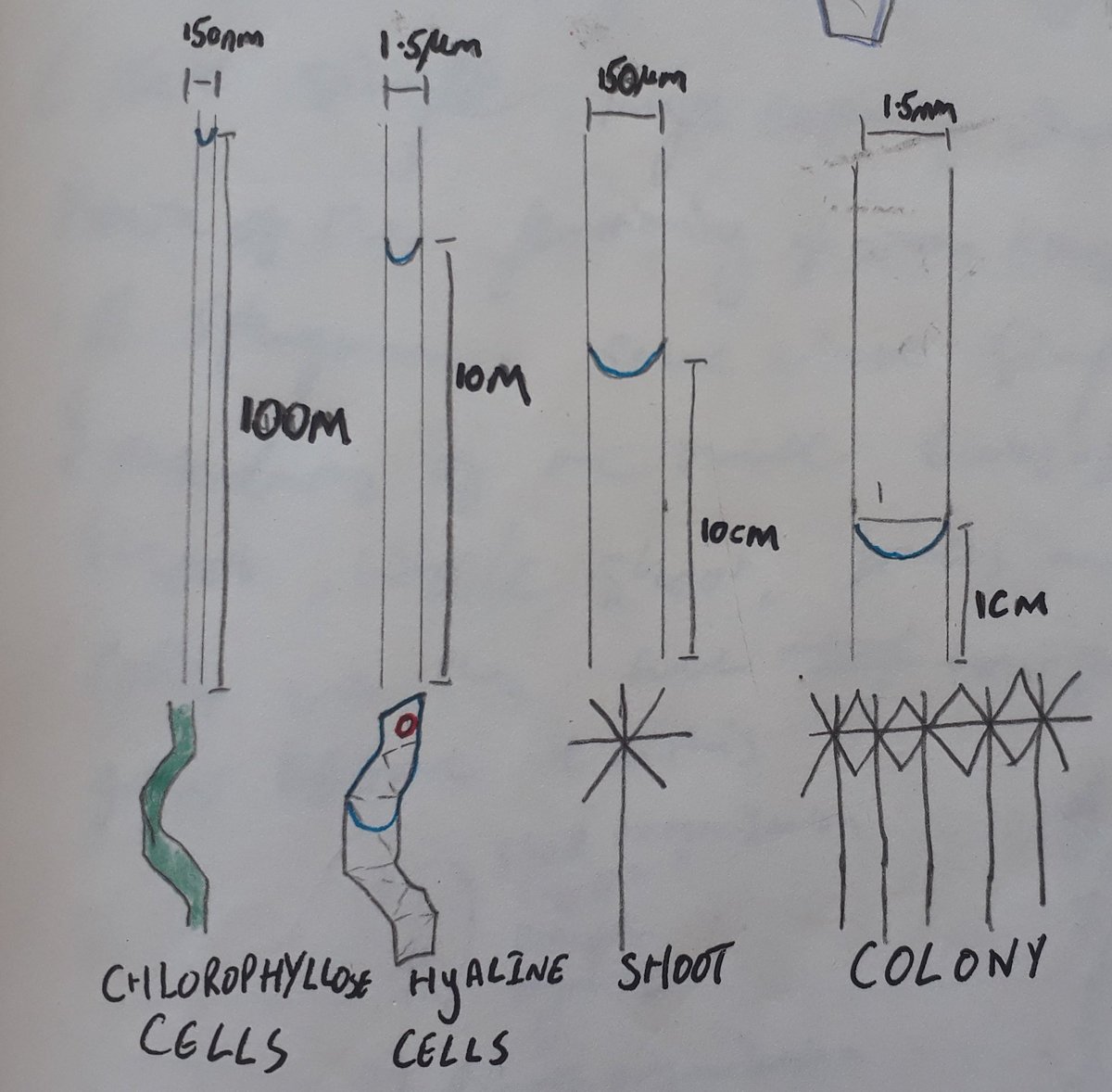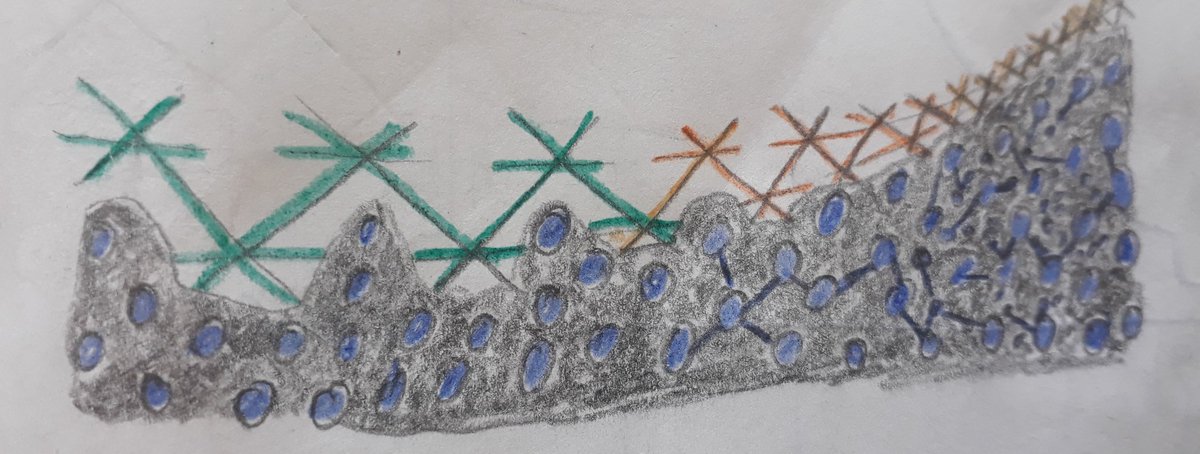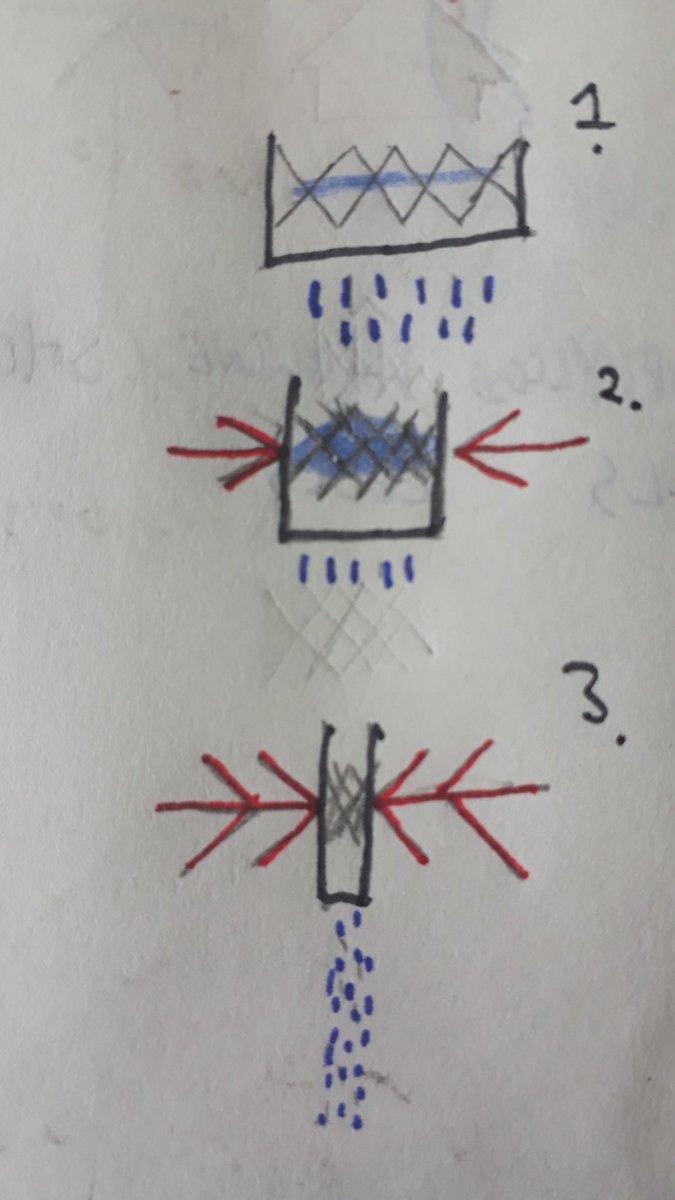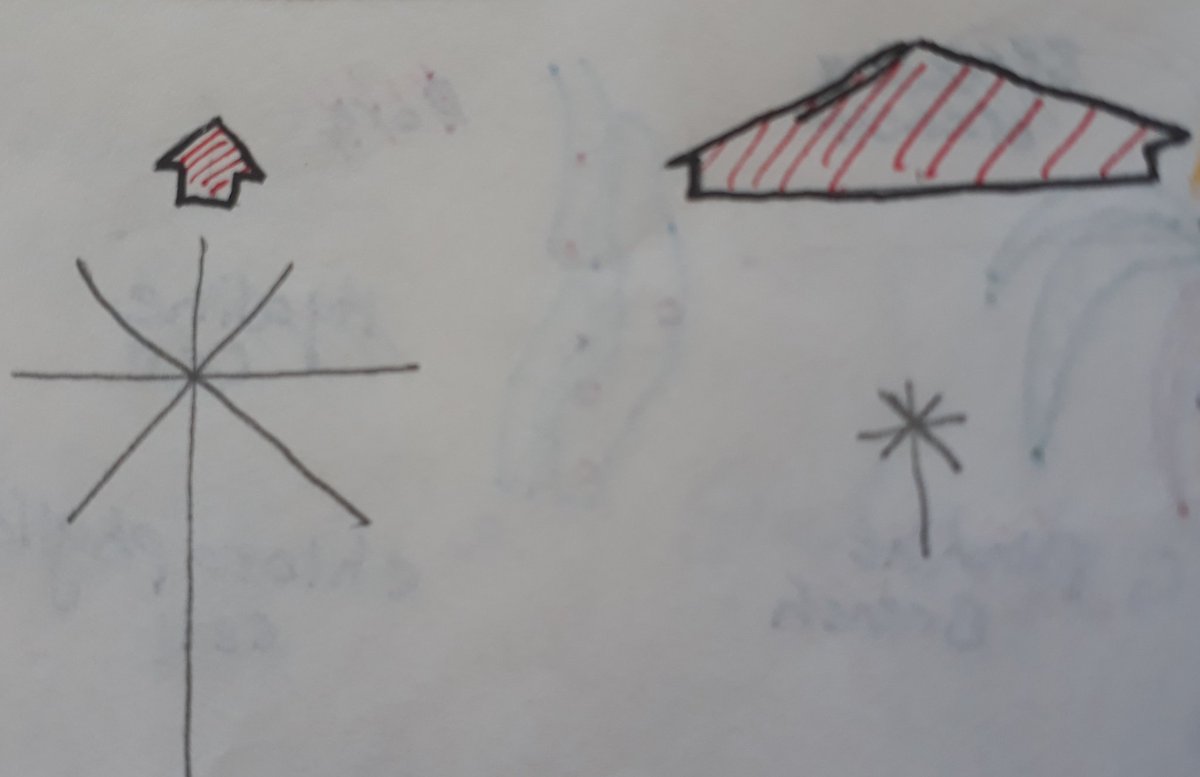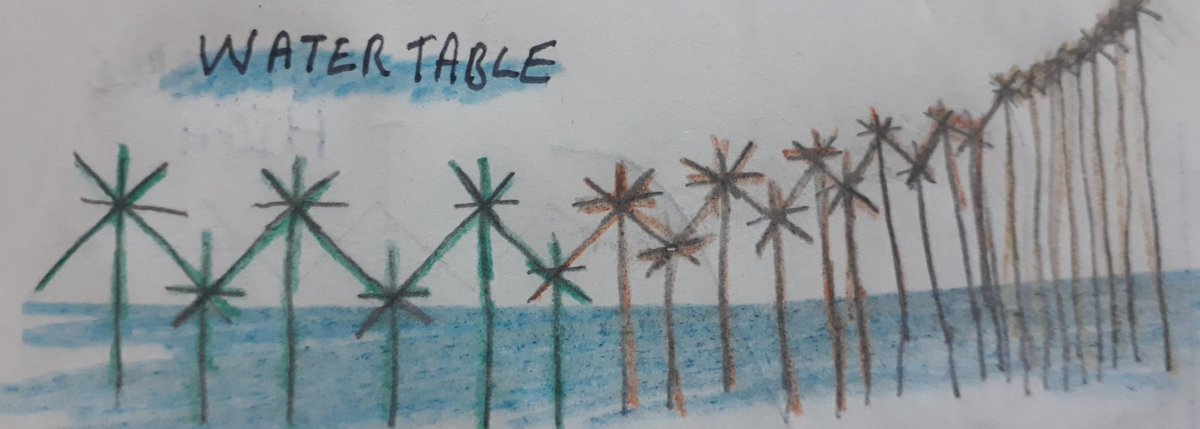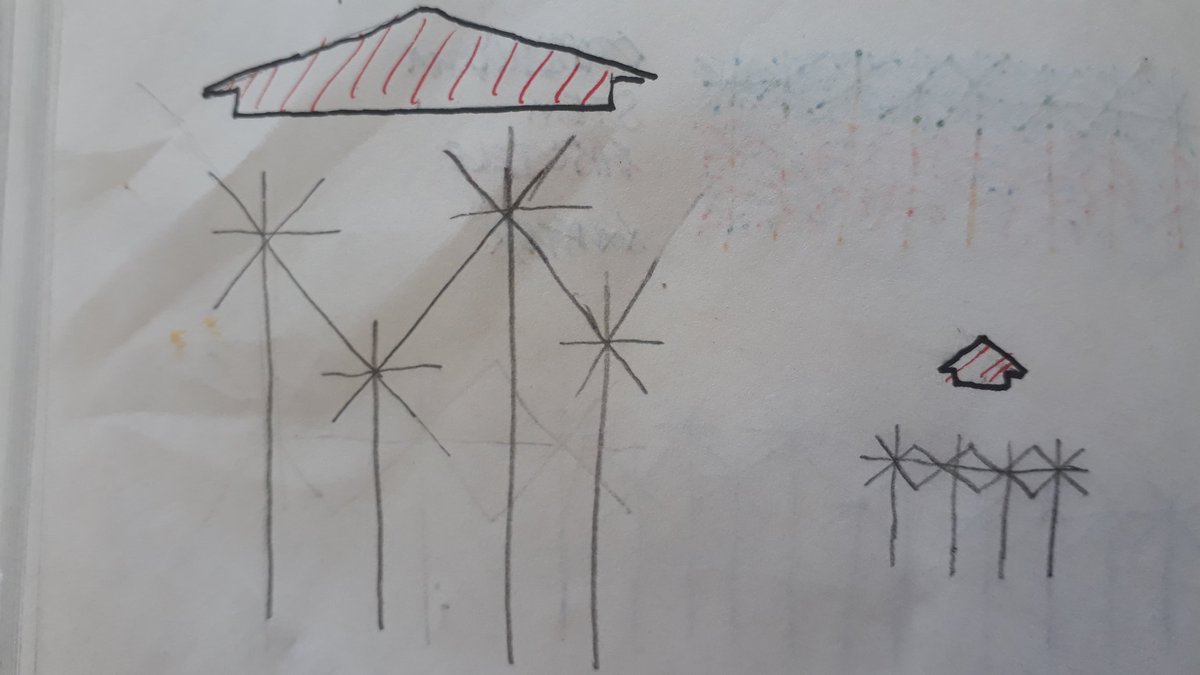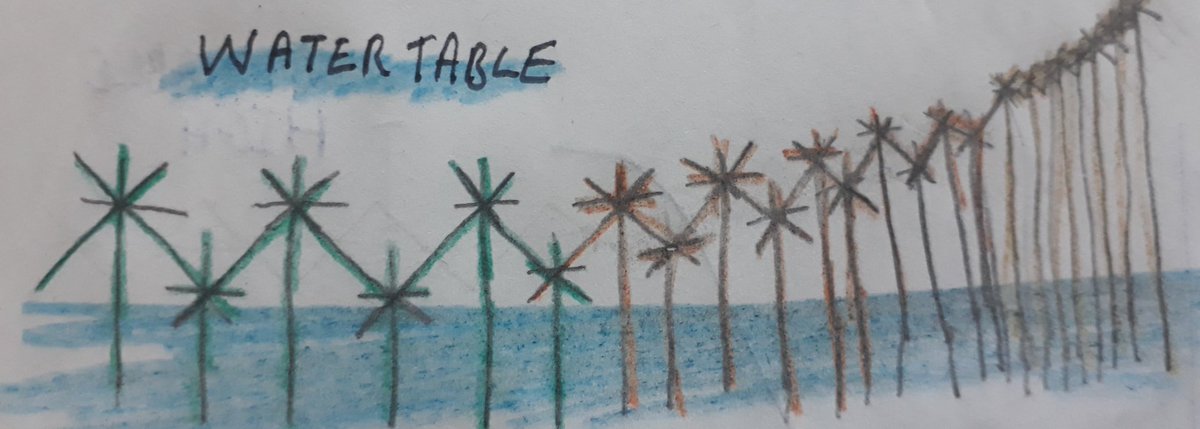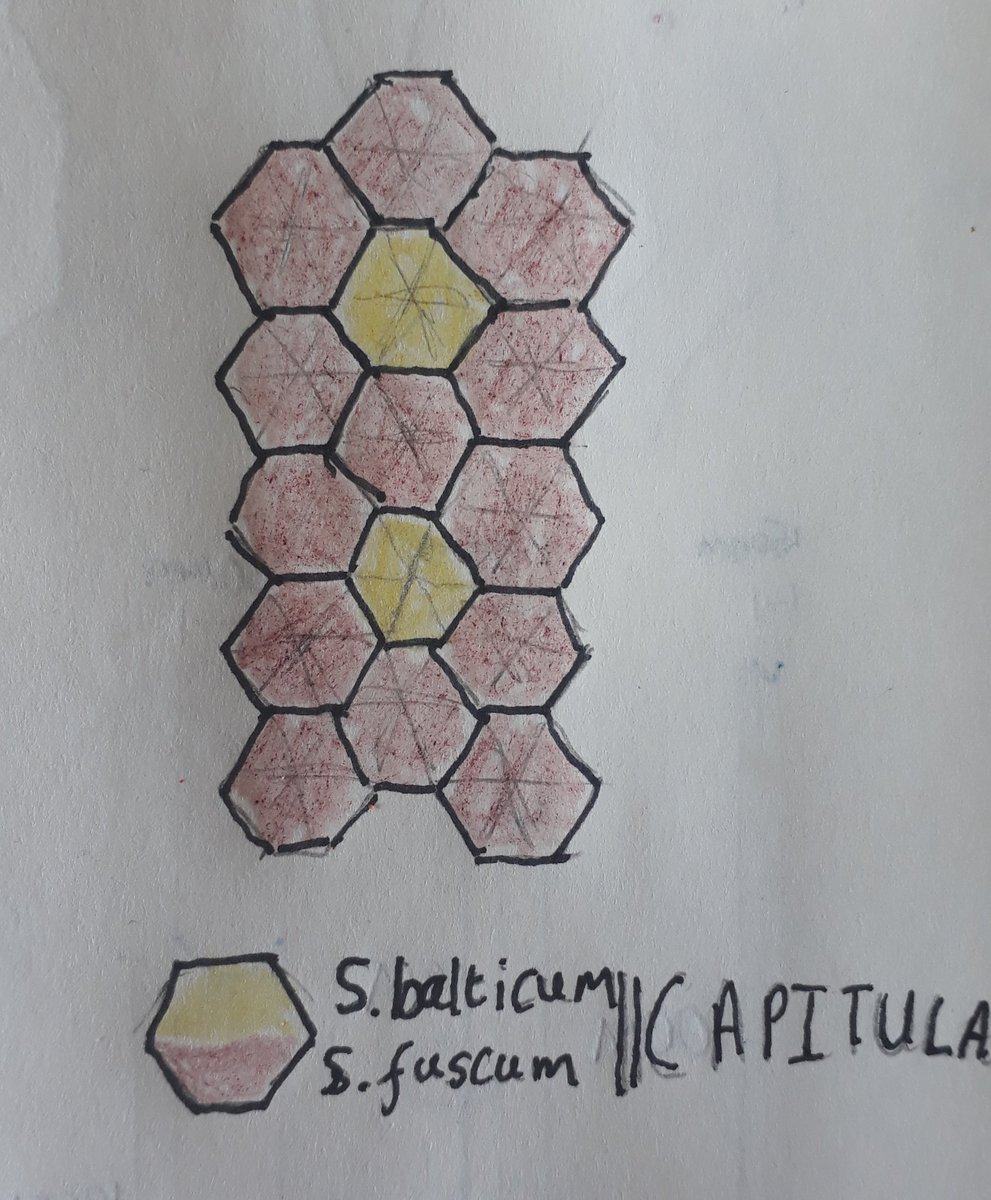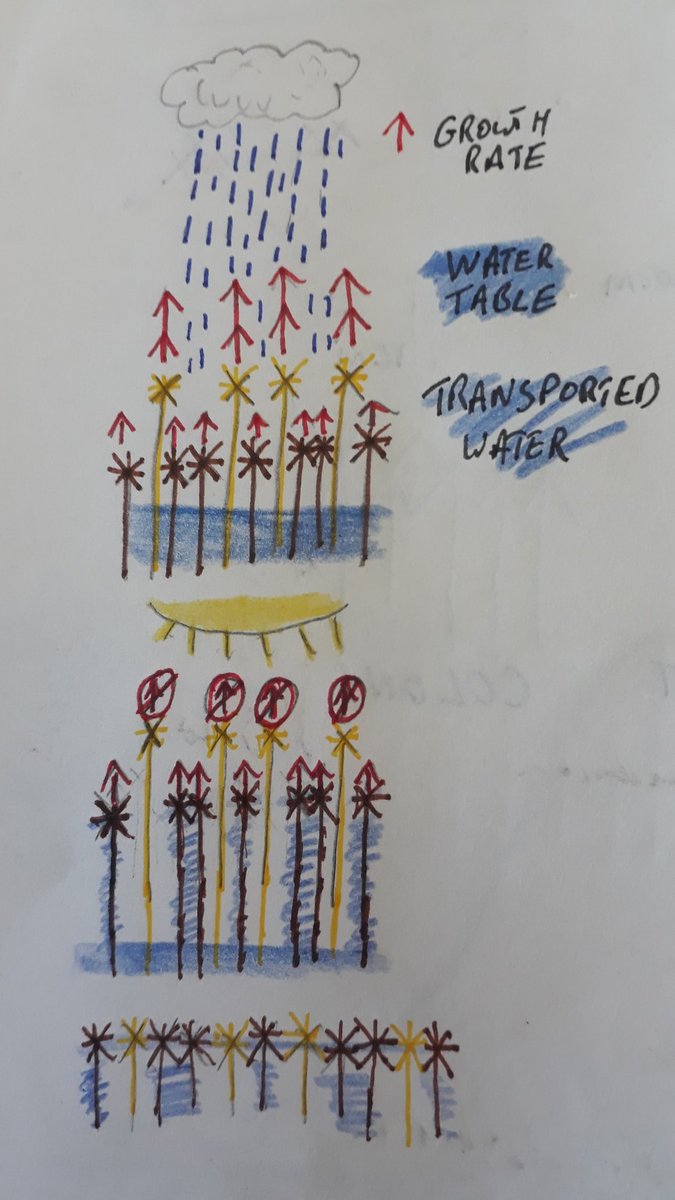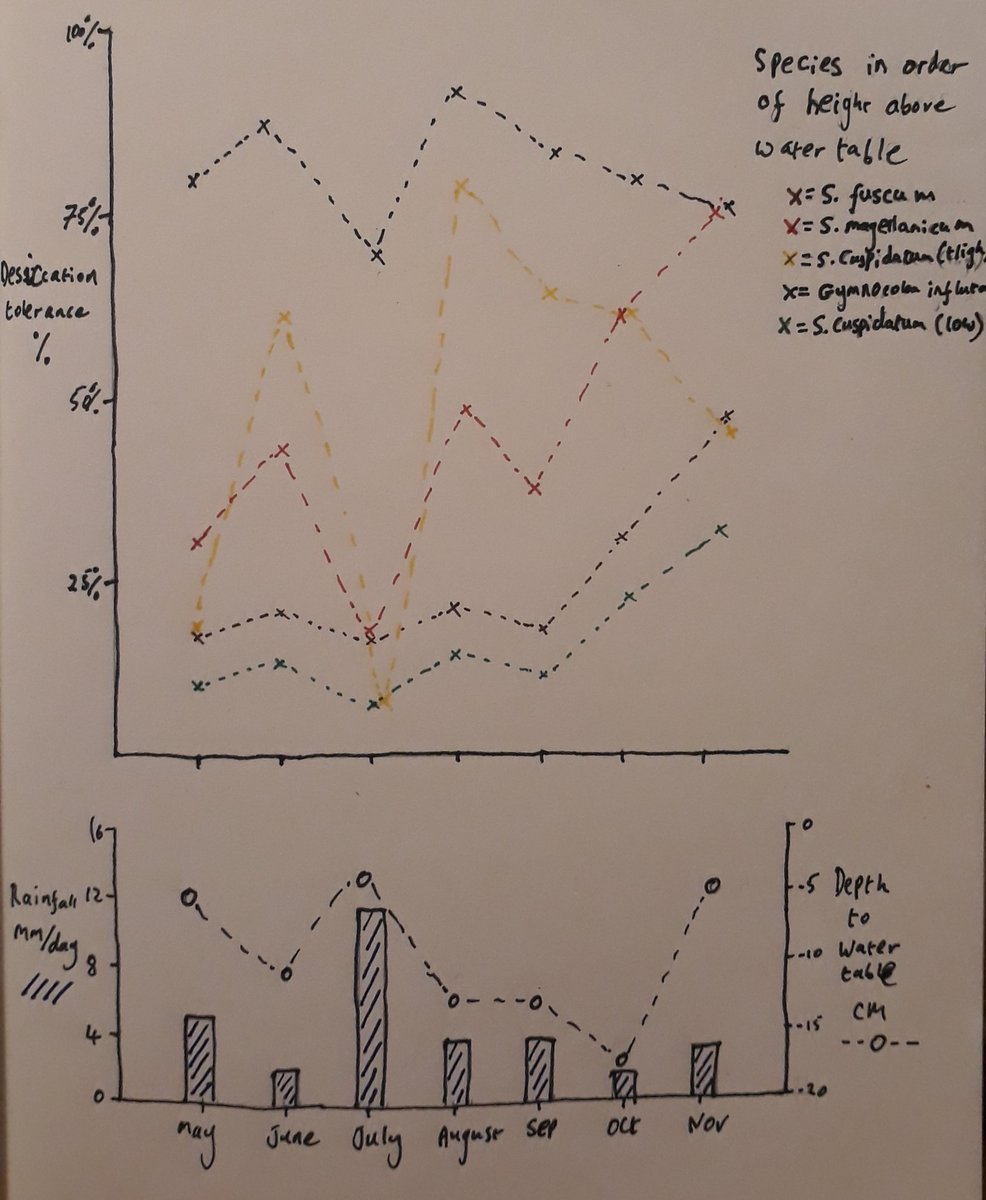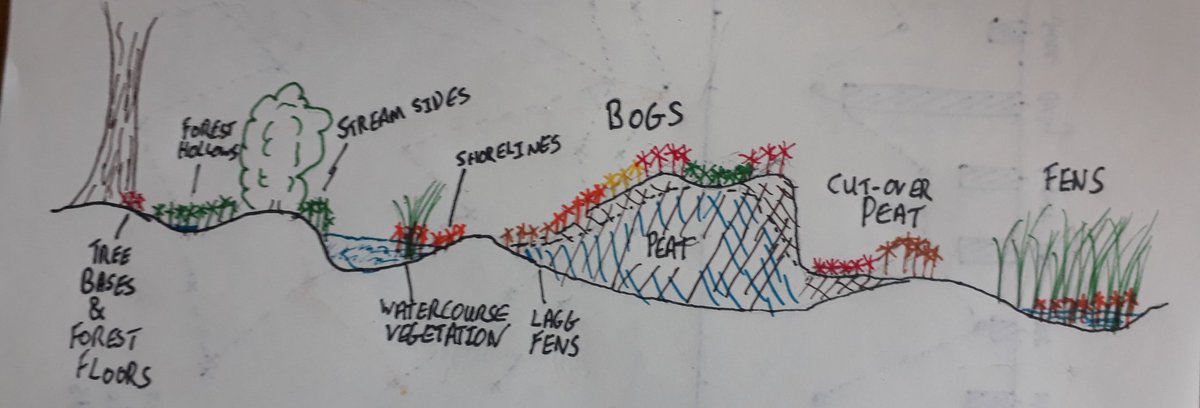Like all life, Sphagnum needs water to survive. Like all bryophytes, its storage and transport of water is external. And it looks like this
A Sphagnum shoot comprises a growing tip (capitulum) formed from whorls of branches where most photosynthesis takes place. A stem, and at regular intervals along the stem groups of branches (fascicles)
These fascicles comprise spreading and pendent branches. Both the stem and the branches have leaves which are 1 cell thick that are made of ...
...dead hyaline and living chlorophyllose cells. The large barrel-like hyaline cells contain large amounts of water, which enter the hyaline cells through pores.
Sphagnum shoots grow together to form a colony of shoots with overlapping branches. Water is transported and retained at all levels in the gaps between the plant material. Most of Sphagnum is simply space to fill with water or dead plant matter.
Mind the gaps. The capillary action of small gaps is greater than large gaps. Increasing the depth of the water table to the Sphagnum surface results in water loss from large gaps 1st, then the smaller gaps. There is a sudden drop when the hyaline cells lose water.
This rapid drop in water content happens when the pressure differential of the inside and outside of the hyaline cells is greater than the water tension holding the water in. The meniscus deforms inward rapidly expanding and dewatering the cell in a process called air seeding.
Sphagnum is goverened by capillary law. The smaller gaps, eg hyaline pores, are small enough to raise water to 10m. But air seeding of hyaline cells can occur at an air humidity <98%. Significant amounts of water are maintained by the gaps created by the overlapping plants.
Below live Sphagnum is dead Sphagnum (famously peat). Gap size and interconnectedness of Sphagnum (live and dead) describe how high water may be drawn from the water table. Water transport and retention is greater where there are more smaller, more interconnected gaps
It is the architecture of the material that matters. Gently squeezing Sphagnum results in increased water retention as it decreases the gap size. There is a limit though, too far and it starts coming out.
Holding onto water is all well and good but water is inevitably lost. Sphagnum shoots come in two extremes, small shoots and big shoots. Small shoots lose water rapidly, big shoots less rapidly.
The further a species lives from the water table the smaller its typical shoots are. Smaller sub-surface gaps transport water further than large gaps. Alone, small shoots would rapidly lose water through evaporation but Sphagnum function as a colony.
Integration of shoot water economy transports more water, creating a shared pool. Increasing integration increases the likelihood of an individual shoot drying. To counter this colonies reduce their water loss by having a smoother surface, decreasing evaporation.
Close to the water table, water is freely available. Shoot survival depends on outgrowing neighbours. Growth is rapid. Far from the water table shoots share water as colony structure becomes greater than its parts. These parts cost more energy, slowing upward growth.
Sphagnum morphology is extremely plastic. Several species occur as single shoots much higher above the water table than they do as a colony by mimicking the shape of the surrounding species. By integrating into the surrounding surface they benefit from shared water.
In the driest periods the surrounding shoots are still moist but the irregular shoots dry out. These surrounding shoots can still grow. The irregular shoots have faster growth rates when moist and maintain their position in the surface by having the same average growth rate.
All bryophytes can cope with some degrees of dessication. Sphagnum species develop dessication tolerance if there is a period of repeated drying and re-wetting. Tolerance increases towards the height of summer AND during Autumn as ice formation is dehydrative.
Knowledge of Sphagnum water economy is based on the height above the mean water table in mires. Sphagnum occur elsewhere, AND precipitation and air humidity are large sources of water. How Sphagnum physiology interacts with the wider envronment is a relatively unexplored avenue.
Refs:
Hayward & Clymo (1983) https://doi.org/10.1098/rspb.1982.0044
Thompson">https://doi.org/10.1098/r... & Waddington (2008) https://doi.org/10.1002/eco.31
Lewis">https://doi.org/10.1002/e... (1988) https://doi.org/10.1104/pp.87.3.577
Rydin">https://doi.org/10.1104/p... (1985) https://www.jstor.org/stable/3565573
Hájek">https://www.jstor.org/stable/35... & Vicherová (2013) https://doi.org/10.1111/plb.12126">https://doi.org/10.1111/p...
Hayward & Clymo (1983) https://doi.org/10.1098/rspb.1982.0044
Thompson">https://doi.org/10.1098/r... & Waddington (2008) https://doi.org/10.1002/eco.31
Lewis">https://doi.org/10.1002/e... (1988) https://doi.org/10.1104/pp.87.3.577
Rydin">https://doi.org/10.1104/p... (1985) https://www.jstor.org/stable/3565573
Hájek">https://www.jstor.org/stable/35... & Vicherová (2013) https://doi.org/10.1111/plb.12126">https://doi.org/10.1111/p...
Lenné et al. (2010)
Https://doi.org/10.1111/j.1365-3040.2010.02178.x.
Rice (2012) https://www.jstor.org/stable/lindbergia.35.53
Moffett">https://www.jstor.org/stable/li... (2015) https://doi.org/10.25227/linbg.01035
Elumeeva">https://doi.org/10.25227/... (2011)
https://doi.org/10.1111/j.1654-1103.2010.01237.x
Golubev">https://doi.org/10.1111/j... & Whittington (2018)
https://doi.org/10.1016/j.jhydrol.2018.02.083">https://doi.org/10.1016/j...
Https://doi.org/10.1111/j.1365-3040.2010.02178.x.
Rice (2012) https://www.jstor.org/stable/lindbergia.35.53
Moffett">https://www.jstor.org/stable/li... (2015) https://doi.org/10.25227/linbg.01035
Elumeeva">https://doi.org/10.25227/... (2011)
https://doi.org/10.1111/j.1654-1103.2010.01237.x
Golubev">https://doi.org/10.1111/j... & Whittington (2018)
https://doi.org/10.1016/j.jhydrol.2018.02.083">https://doi.org/10.1016/j...

 Read on Twitter
Read on Twitter